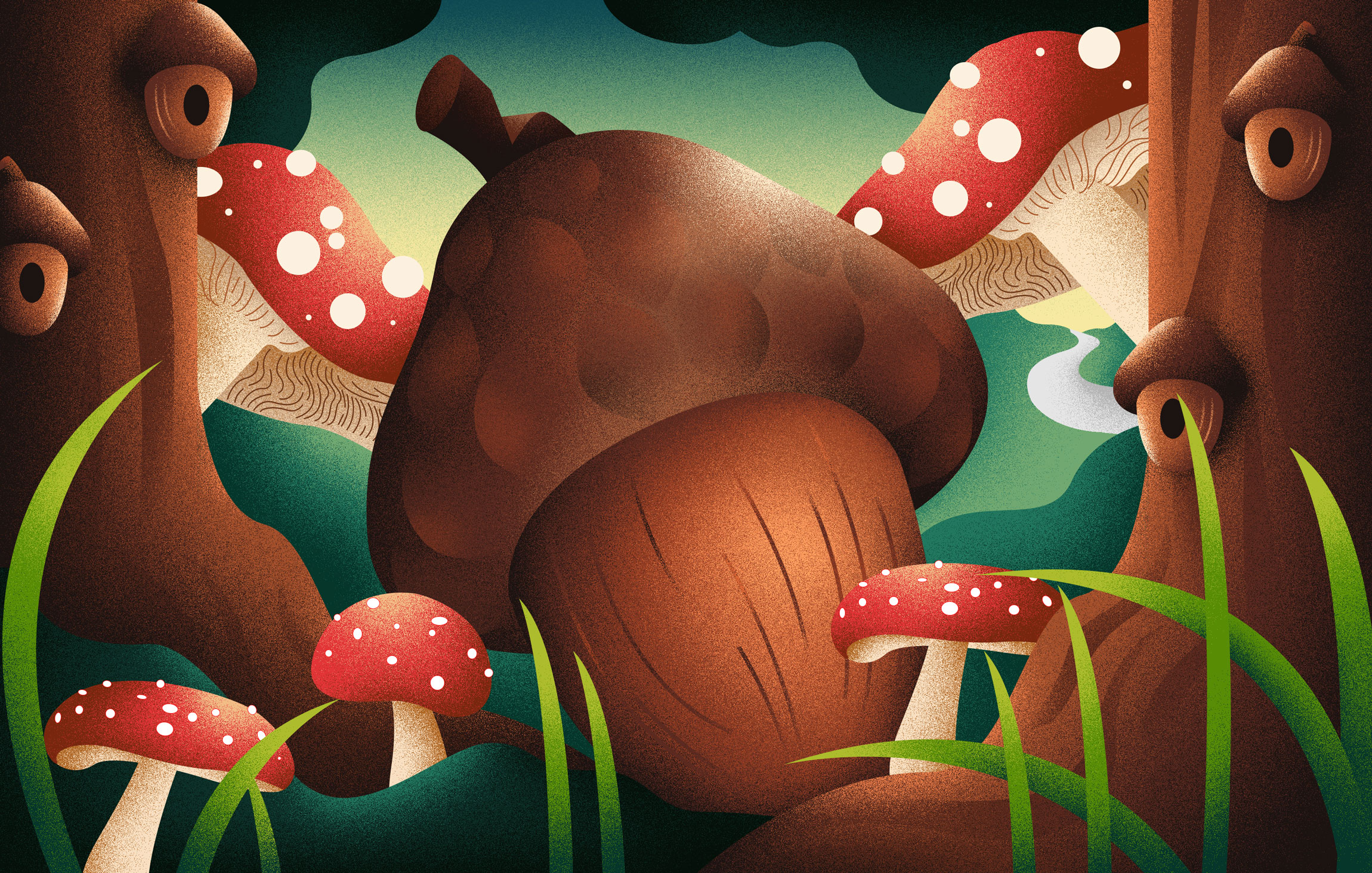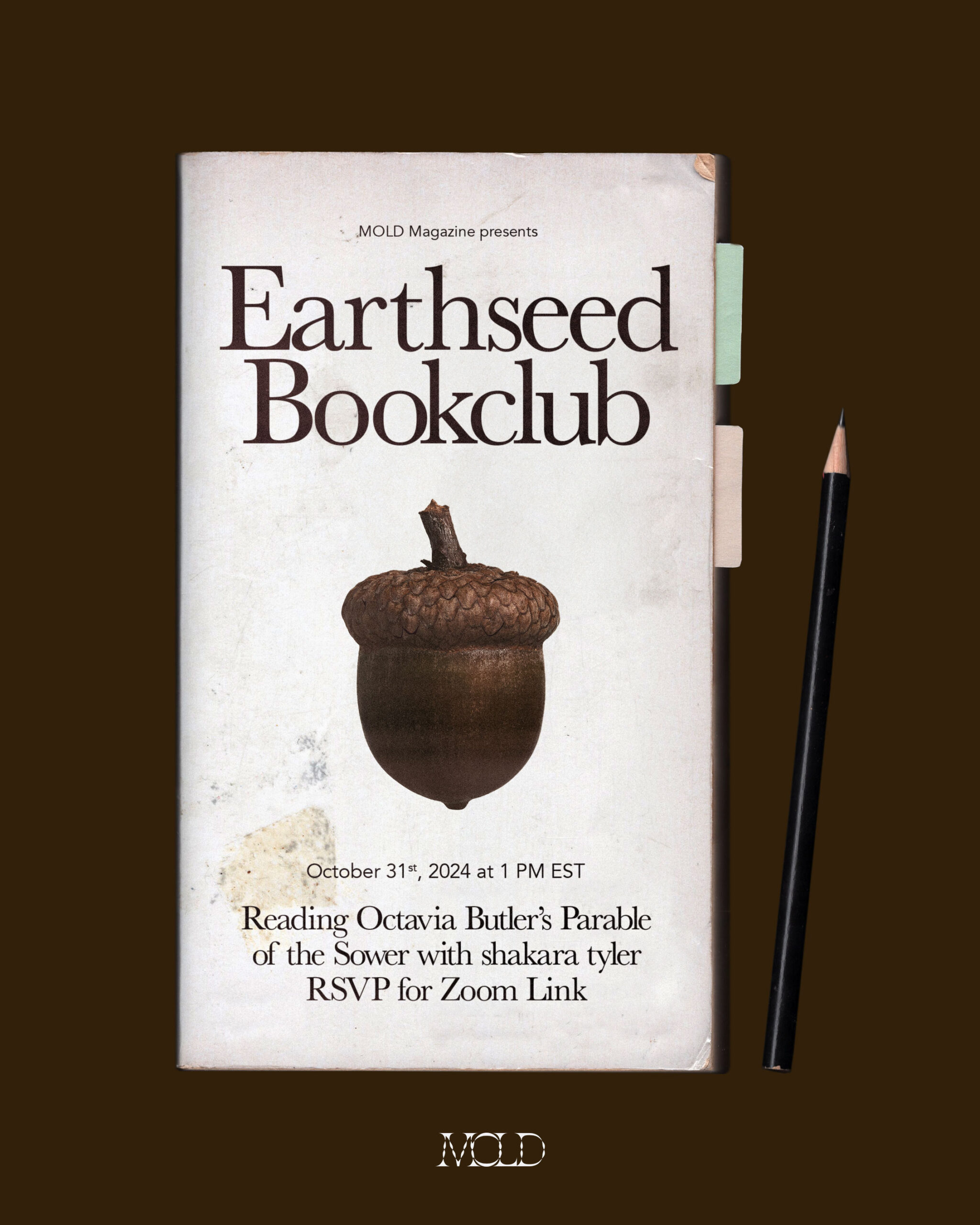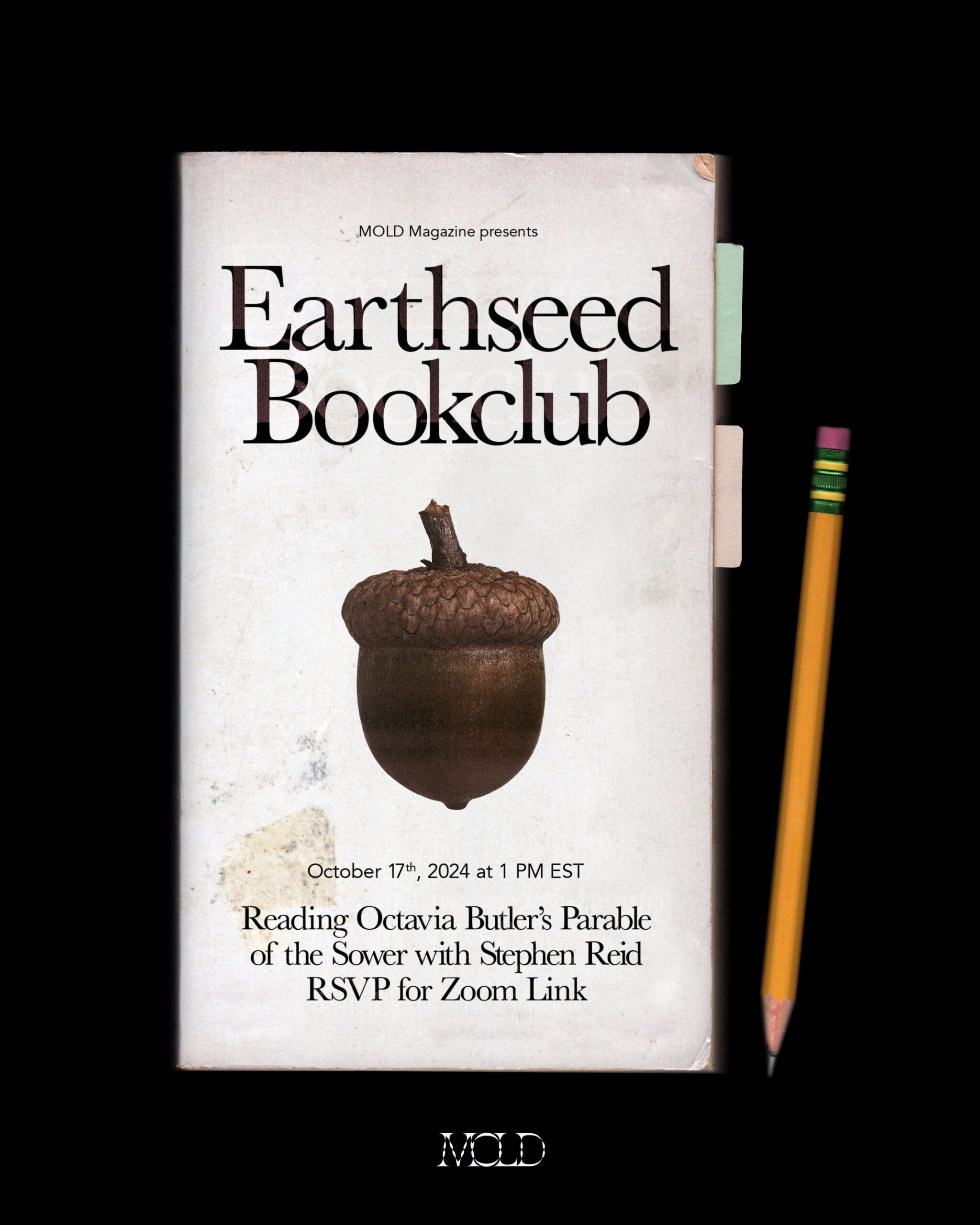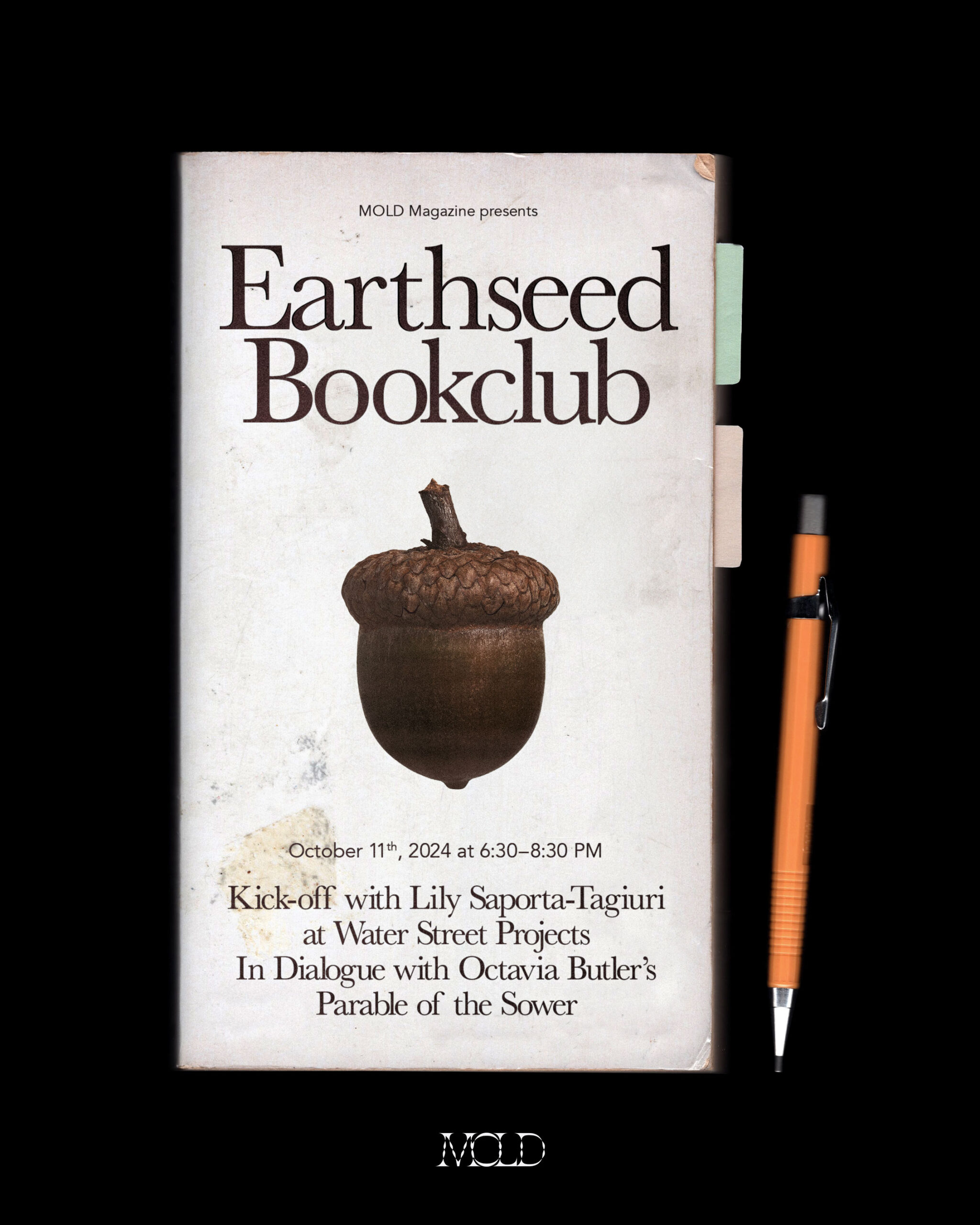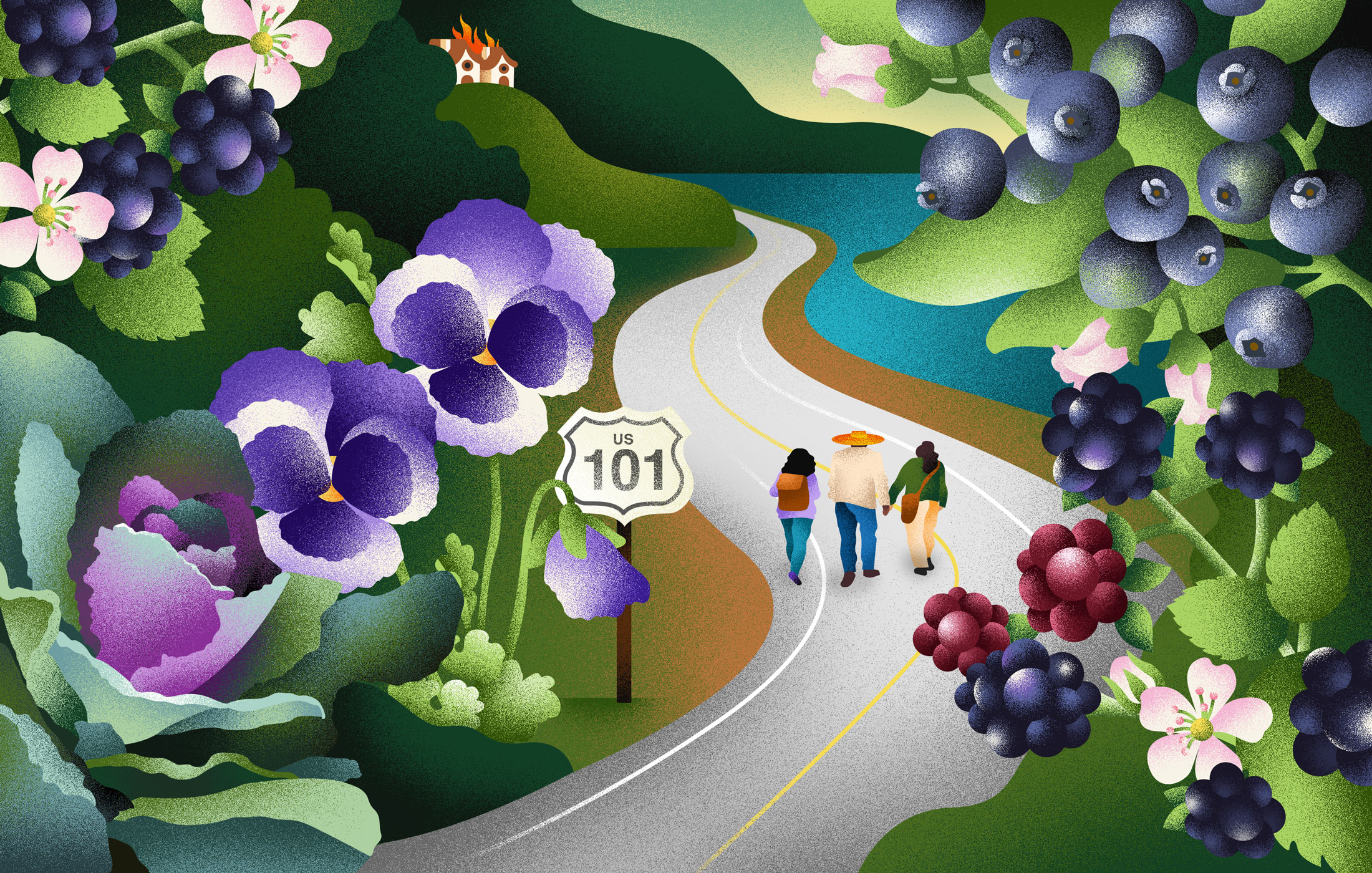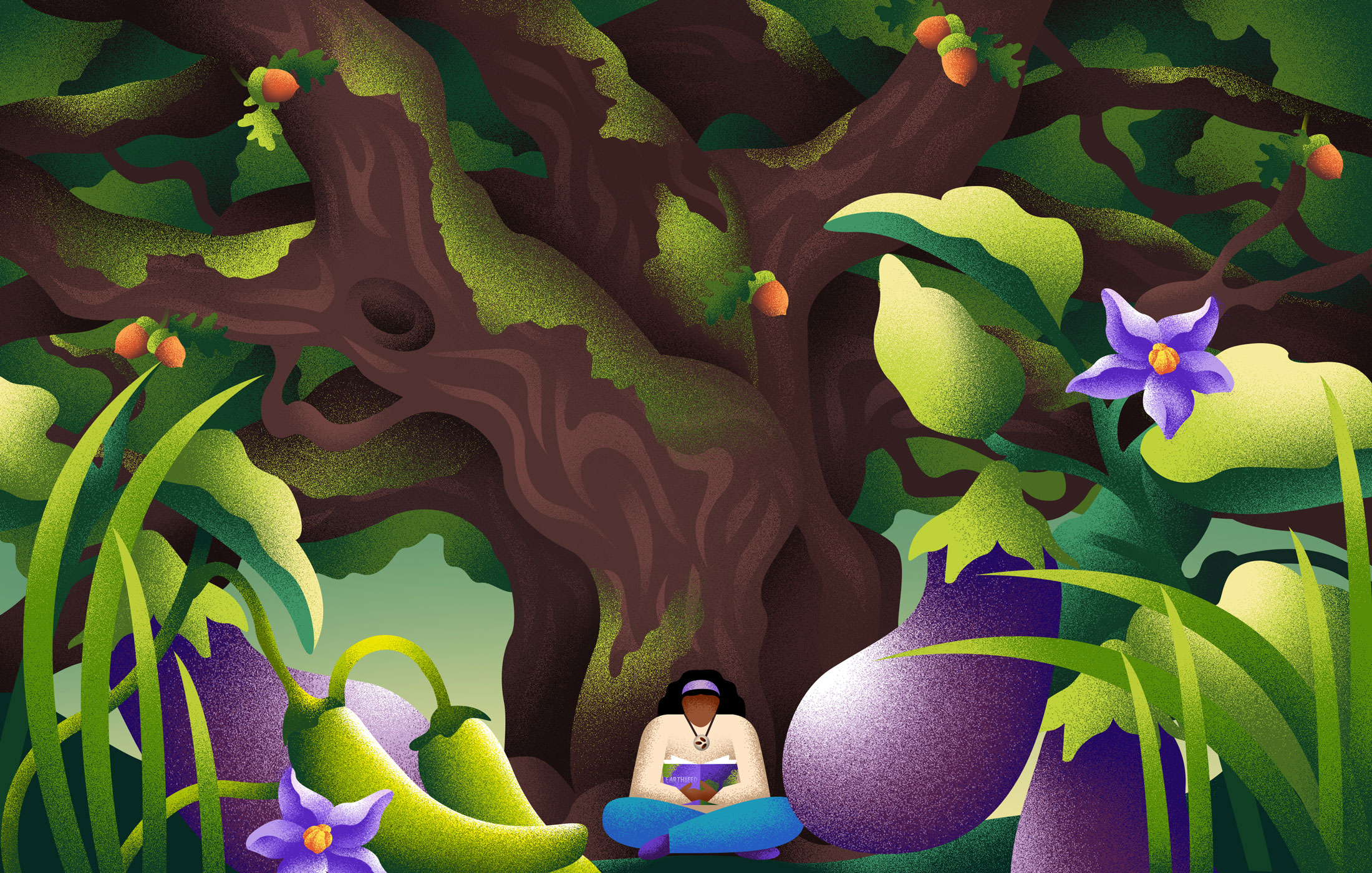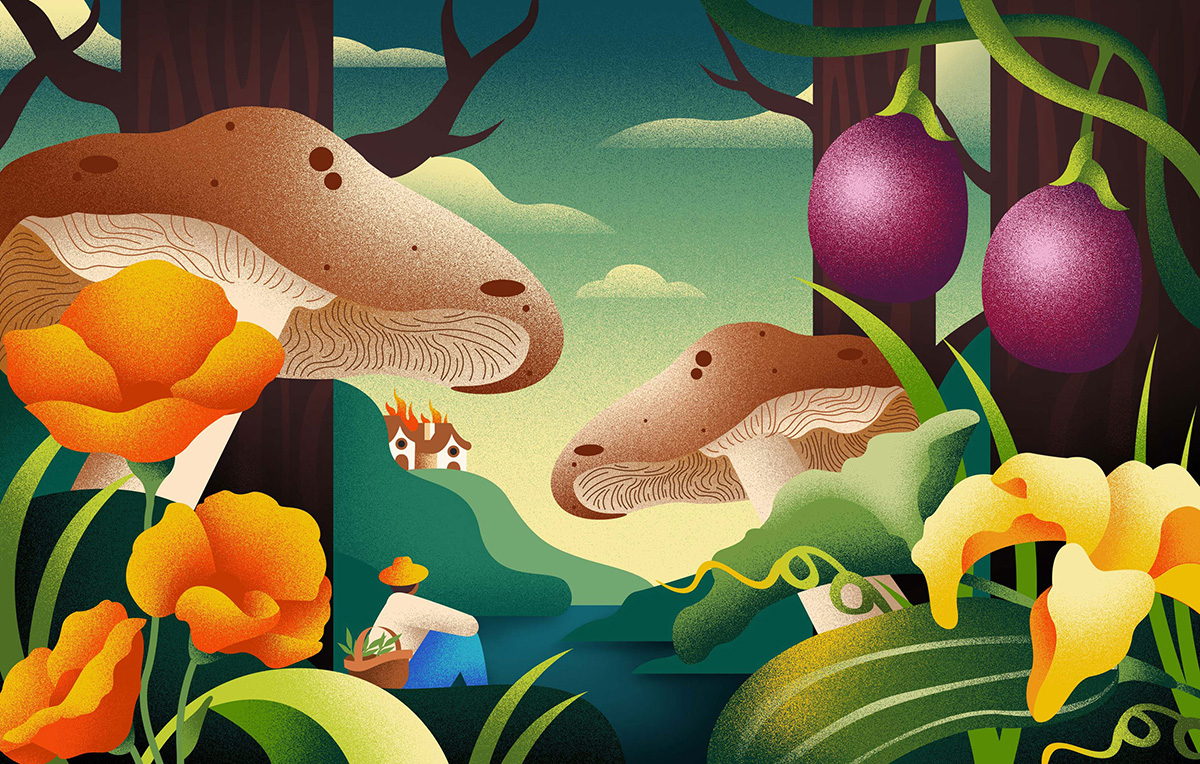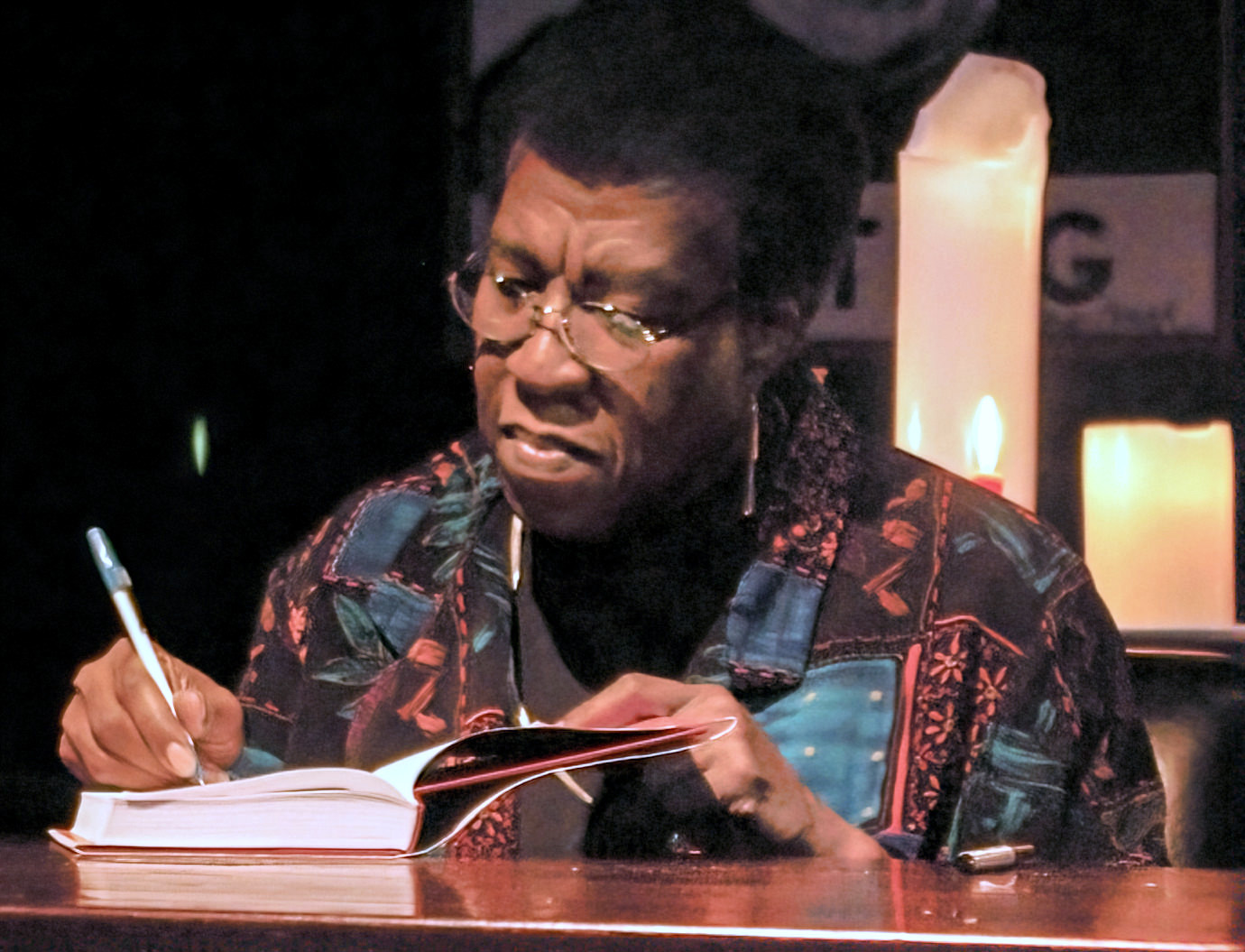This piece is a part of our series Earthseed, which explores Parable of the Sower’s legacy in shaping our current attitudes toward food futures.
In their popular podcast “Octavia’s Parables”, Adrienne Maree Brown and Toshi Reagon offer a chapter-by-chapter analysis of Octavia Butler’s Parable of the Sower and Parable of the Talents. In one illuminating episode that explores an early chapter of Parable of the Sower, brown notes that although Butler’s Parables are fictional, there is nothing within the books that “is not actually happening right now, that is not unfolding right now” (brown, 2020). The elements of radical survival, resistance and hope in the Parables have real world analogs in both the past and present. In this way, the Parables represent a fictional collection of nonfictions that prophesied the cyclical relationship among the beginnings and endings of the world, and liminal spaces between them.
From one angle, Butler’s Earthseed religion and Acorn, the community founded around it, could be perceived as a mythical utopia. From another angle, it could be read as a collapsing of utopia and dystopia. The fictional Acorn community is nothing but a reflection of our everyday lives navigating mass killings by the police state, escalating environmental racism, the institutionalization of climate sacrifice zones, increased privatization of public goods, and the increase of land, housing and food insecurities as well as the erosion of basic human rights (voting, reproductive, etc.). At the foundation of these realities are betrayal, grievances, conflicts and competition—all traces of life in Acorn. Even within utopias, there are dystopias and vice versa.
The political power of relationships and the knowledge built in the struggle of cultivating them and working towards liberation is a special kind of alchemy. If “God can be directed, focused, speeded, slowed, shaped”, so can our very beings and the liberation journeys we’ve committed to.
Freedom is a place we actively make, an endless journey rather than a destination, according to abolitionist Ruth Wilson Gilmore. This necessitates seeing liberation as a way of traveling, to engage in the repair of the world in a way that brings meaning, joy, belonging, power and purpose. So, that means we aren’t taking things from broken to fixed, rather we are participating in an endless process of fixing. We’re in constant (re)negotiations with utopias and dystopias to not only keep breath in our bodies, but to pursue the abundant possibilities of ‘other suns,’ as Butler reminds us.2
What does this look like? Here are lessons I’ve gathered over time as a mother, returning-generation farmer, organizer, and abolitionist working in formations such as the Black Dirt Farm Collective (BDFC), Detroit Black Farmer Land Fund (DBFLF) and the Detroit Black Community Food Sovereignty Network (DBCFSN).
- 1. Gilmore, R. W., Antipon, L. C., Alves, C. N., & Novo, M. F. (2024). Ruth Wilson Gilmore-Freedom is a place. Ruth Wilson Gilmore and Abolition Geography. GEOUSP, 28(1), e-222824.
2. Parable of the Trickster by Octavia E. Butler.
Dialogue of Knowledges, or “Diálogo de Saberes”
Diálogo de saberes is a method of exchanging historically constructed knowledge and senses to collectively produce new meanings and shared struggles (McCune et al, 2016). It promotes commonality in various ways of knowing and being. I first learned about this from campesinos/as in the Caribbean and the Global South building new worlds through agroecological organizing with a peasant worldview at the center. The Campesino a Campesino grassroots movement or farmer-to-farmer methodology, taught me the importance of intentionality, reciprocity and love as critical work in building new worlds. Our differences as assets rather than liabilities3, as Black Queer Feminist Audre Lorde teaches us, is a core tenet in my life.Similar to the way Lauren Olamina, Butler’s protagonist who founds Acorn and the Earthseed religion, uses “discussions” for democratic deliberation and as “problem-solving sessions”, I see tremendous value in these dialogic spaces that are not only about pushing the vision forward but the beauty of “planning, healing, learning, creating, times of focusing and reshaping ourselves.”4 Traversing the liminal spaces between the old and new requires knowledge to be shared in communion. In my own work, this has been pivotal in developing farm crop plans that uphold economic security and community principles and engagement. This has been pivotal in troubleshooting how to fix a tractor without expending dollars we didn’t have in our organizational budget. This has been pivotal in building a mechanical compost sifter with spare industrial parts found in junkyards and abandoned basements. This has been pivotal in developing conflict resolution and accountability plans for grassroots organization and collective work. Knowledge with and for—instead of knowledge over and against—is a hallmark process for using imagination as the resistance it was meant to be.
- 3. Audre Lorde (1983), ‘The Master’s Tools Will Never Dismantle the Master’s House’, pp. 94-101, in Cherrie Moraga and Gloria Anzaldua (eds), This Bridge Called My Back: Writings by Radical Women of Color (New York: Kitchen Table Press)
4. Butler, O. (2000). Parable of the Sower. 1993. New York: Grand Central.
Cooperation Over Competition
Eurocentric theories such as Darwinisim will tell us we have to compete in order to survive. The suns I am working toward and actively feel everyday show me otherwise. Living organisms survive by working together, cooperating not competing. This is seen in the way worms take shelter in the soil, breathing through their skin, a process that then creates oxygen underground for plant roots to flourish. This is seen in the way pasture-raised chickens can decimate a pest population in a field of greens to feed themselves, and then release the fecal waste for natural fertilizer for multiple generations for crops in the same soil. This is seen in how a group of farmers will create a circular labor structure so that everyone’s farm gets what they need from the communal arrangement. In the effort to resist individualism and commit to the return to communal spirit, the path through has to be in cooperation with others. This is shown in the way Acorn community members pool their labor, knowledge, resources and tools to meet common needs which include housing, educational, medical and nutritional needs, of the group as a whole is medicine practice. Communally built houses, skill sharing, and universal education is what makes Acorn and the Earthseed religion remain viable as praxis of survival in a post-apocalyptic world.
Ancestral Memories
We all have a deep yearning to be connected to something grander or simply beyond ourselves. This is the spiritual knowing that guides our ancestral memories. We are who we are, we are where we are and we know why we are doing what we are doing because someone who came before us carried the knowledge necessary to ensure our existence, to feed us now, in our present toward the future. And before them, someone else. The power of memories and the ancestry connected to them cannot be understated. Nothing is new, even when it has been forgotten, ignored or stolen. Memory is pouring libations to our ancestors and recalling their stories. Memory is planting culturally-relevant seeds and telling the stories that come along with them. Memory is calling on the Council of Elders to facilitate conflict transformation processes.
The Acorn community is laced with ancestral memory. Lauren carries seeds from home to help begin a garden of vegetables and fruit trees, seeds that allows Acorn to live off the land. The seeds help her foster a sense of home as she shares memories with her brother, Marcus over acorn bread like their mother used to make. They also pay homage to the ancestors through the Earthseed statement: “We remember them, And within us, They live” (Butler, 1998, p. 68). These are elements of “Sankofa,” the Adinkra symbol meaning “going back to fetch it”, as a necessary step to move forward.There is no present and future without the past.
Food, Land and Togetherness
Abolitionist Mariame Kaba says, “everything worthwhile is done with other people.”5 The political power of relationships and the knowledge built in the struggle of cultivating them and working towards liberation is a special kind of alchemy. If “God can be directed, focused, speeded, slowed, shaped”,6 so can our very beings and the liberation journeys we’ve committed to. One of the most magical witnessings I experienced is bringing people together on sacred land spaces that were made sacred by the beloved community, ethics and traditions that are co-created in those spaces. Something as simple as pouring libations to our ancestors together, sweating together in toiling the soil, preparing meals and eating good food together, creating nurturing spaces for our children together, sharing our stories and memories together and dreaming about the world we need together in the presence of our non-human kin (trees, worms, butterflies, black walnuts, etc.) is deeply transformative. It is something that science has yet to explain beyond how togetherness solicits the release of dopamine in our brains. Food as a means for survival, a means to build community, and a means to repair relations, as seen in the Parables, is more than physical nourishment, just as land is more than physical space. They represent the (belief in) malleable God that allows our community to be constantly (re)created with intentionality, purpose and commitment.
- 5. Kaba, M. (2021). We do this’ til we free us: Abolitionist organizing and transforming justice (Vol. 1). Haymarket Books.
- 6. Butler, O. E. (1998). Parable of the talents. New York, NY: Grand Central Publishing, p. 46.
In his 2003 analysis of the Parables, utopian scholar Peter G. Stillman writes, “Butler does not present a single Utopian answer, but she does propose Utopian possibilities: whether working towards Acorn or Earthseed or both, human beings can act with others to change themselves and their world.”7 For me, these utopian possibilities are inevitably undergirded with dystopian promises because there will always be strife, grievances and disgrace. However, Butler’s mantra “God is Change” illuminates how we are cultivating worlds that transform into other worlds. This is the beauty of building worlds we find along the way to the worlds. The migration itself is the liberation.
- 7. Stillman, P. G. (2003). Dystopian critiques, utopian possibilities, and human purposes in Octavia Butler’s parables. Utopian Studies, 14(1), 15-35, p. 30.
What suns are you seeking?
What truths do they devise?
Are they reflections of you?
What worlds do they rise?
